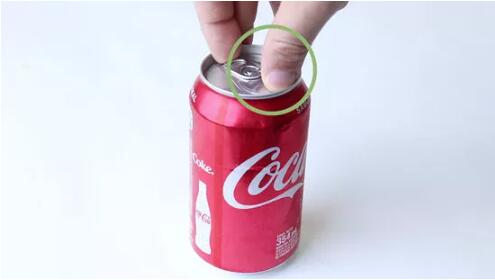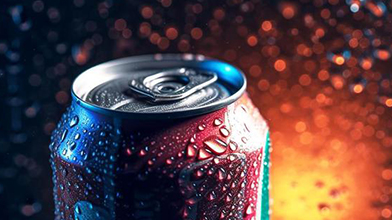An can-container rate of 32.5%—what does it mean for the beer industry?
Mar 21, 2024
"In 2022, the overall canning rate in the beer industry has reached 32.5%. With a beer production volume of approximately 35 million hectoliters in 2022, it translates to 11.5 million hectoliters of beer being packaged using can materials. If we consider the most common packaging format of 330iliters, this to approximately 35 billion cans."
During the recent launch event "AB InBev Asia Pacific's Carbon Journey with Aluminum" held by AB InBev Asia Pacific, Ms. Yuan Yue, the Secretary-General of the Beer Branch of China Alcoholic Drinks Association, shared a set of data regarding beer aluminum cans.
The increasing canning rate, reaching 32.5% in the beer industry, carries significant implications. Translated into English, it means:
Beer is already a packaging-sensitive industry, and with the continuous rise in packaging costs, the increase in the canning rate significantly impacts cost reduction and efficiency enhancement as well as the industry's transition towards premiumization.
Moreover, aluminum cans with higher recycling rates contribute to the green and sustainable development of the beer industry, opening up more possibilities.
In recent years, major beer giants in China have simultaneously increased their product canning rates. Taking Qingdao Beer as an example, data shows that its beer canning rate reached 27% in 2021, and the proportion of canned products has been steadily increasing.
According to calculations by Guoyuan Securities, canned beer products have a profit margin approximately 10% higher than bottled products, and every 10% increase in the canning rate can push the profit margin up by 1-2 percentage points.
Whether in production or transportation processes, cans, which are easy to store and have lower costs, offer better cost-effectiveness compared to glass bottles. Beer products primarily use aluminum two-piece cans, which are small in size, lightweight, and have a high recycling rate. They have lower energy consumption during production and are more environmentally friendly compared to glass bottles. They also have excellent compressive and shock resistance properties compared to glass bottles.
Furthermore, two-piece cans have lower loss rates and can extend the transportation radius of beer, making them more suitable for large-scale beer production. The packaging of two-piece cans is highly adaptable and can quickly respond to changes in consumer scenarios and brand personalization upgrades.
In the context of intense competition in the beer industry, cost reduction and efficiency improvement, as well as premiumization, have become common goals for beer manufacturers. Additionally, with the increasing demand for canned beer in the consumer market, the canning rate in the domestic beer industry continues to rise.
According to a research report by Guotai Junan, the average annual increase in the canning rate over the past 10 years is approximately 0.8%. As the main terminal demand market for two-piece cans, the beer industry is estimated to generate an annual demand growth of 1 to 2 billion cans.
Despite the significant demand, the current canning rate for beer in China is still relatively low compared to the international market. According to Euromonitor statistics, the canning rate for beer in China, using only two-piece cans, was 26.3% in 2021, while the canning rate in the US beer market is close to 70%, and in the Japanese market, it reaches as high as 90%.
Considering the current development trend of the beer market, the canning rate for beer in China is expected to further increase, benefiting the upstream packaging industry.
Benefiting Upstream Industries
The demand for canned beer in the downstream market accounts for nearly 60%, while tea beverages and other carbonated drinks maintain around 20% each. The increasing canning rate of beer undoubtedly brings new opportunities for the development of the upstream aluminum can packaging industry.
Baosteel Packaging has previously stated that with the continuous improvement of the canning rate of beer, it will contribute incremental demand to metal packaging, driving the overall demand for metal packaging products.
Leading metal packaging company ORG (including Ball) is a major upstream supplier for companies such as AB InBev Asia Pacific, China Resources Beer, Tsingtao Beer, and Yanjing Beer. By the end of 2021, ORG's canning capacity had reached 13.5 billion cans.
According to ORG's semi-annual report, its canning capacity reserve is still increasing. The construction investment of its Jiangmen canning factory project and Zaozhuang canning project is still increasing, with the Jiangmen canning factory project already reaching 99% completion. COFCO Packaging's revenue from aluminum packaging business (including canning and single-sheet cans) increased by 5.2% in the first half of this year.
Despite the promising prospects, the aluminum metal packaging industry has a long supply chain and is susceptible to aluminum price fluctuations. Moreover, the aluminum industry is a high-pollution and high-energy-consuming industry, and under domestic environmental policies, production capacity is strictly limited.
Meanwhile, downstream industries such as construction, automotive, energy, and food are gradually increasing their demand for aluminum. Combined with reduced production by foreign aluminum companies, the continuous rise in aluminum prices in recent years has directly led to price increases in downstream beer products.
A thematic report from Citic Securities shows that foreign electrolytic aluminum production capacity may still be affected by the European energy crisis or expectations of production cuts. Domestic electrolytic aluminum inventory is at a low level, making it difficult to bridge the gap in overseas demand for electrolytic aluminum. It is expected that the decline in aluminum prices in 2023 will be limited, and prices are likely to remain at a high level. The growth rate of can prices is expected to be controlled within high single digits, providing less pressure for the beer industry compared to the overall level in 2022.
Amidst the high fluctuation of aluminum prices and the rising trend of energy conservation and emission reduction, recycled aluminum is entering the field of vision of beer companies as a strategic layout for upstream metal packaging enterprises.
Currently, beer giants such as China Resources Beer and AB InBev Asia Pacific have started collaborating with upstream suppliers to launch recycled aluminum projects and deepen the development of a green industrial chain. The actions of industry leaders provide insight into the long-term commitment of beer companies to green and sustainable development.
According to data, the demand for two-piece cans in China's market exceeded 55 billion cans in 2022. Calculated based on a 60% market share for the beer industry, beer cans accounted for over 33 billion units. Furthermore, according to the International Aluminum Institute, China currently has a recycling rate of over 98% for used beverage cans, making it the largest aluminum can recycling country in the world.
Beer, which dominates the aluminum can market, shows enthusiasm for the aluminum industry not only because of cost control considerations but also due to the development of a green industry chain.
It is reported that AB InBev Asia Pacific has achieved the equivalent utilization of approximately 6,000 tons of recycled aluminum cans. In addition, they have introduced more low-carbon "lightweight cans," reducing the use of approximately 2,700 tons of aluminum. The aluminum packaging has achieved a carbon emission reduction of over 40,000 tons, with a reduction of over 30% in carbon emissions per can.
From the emphasis placed by beer giants on the upstream packaging industry, it is evident that the demand for green development in the beer industry has already spread throughout the entire supply chain. Within this context, apart from creating a healthier industrial value chain, it is important to recognize the intensifying competition in the current beer market.
Embracing green and low-carbon practices in the current discourse of high-quality sustainable development often signifies embracing value and the future. The choices made by beer giants regarding green development will become one of the key influencing factors in the ongoing upscale adjustments in the beer industry.

